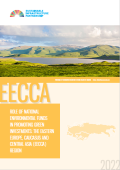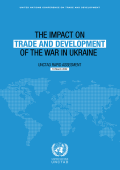
In the context of international carbon markets under the Paris Agreement, "readiness" refers to the preparedness of a country to effectively engage in Article 6 collaboration. Involving the development of policies, infrastructures and capacities that enable strategic participation in Article 6 activities, readiness is crucial because it allows both seller...
This technical brief aims to highlight the key recommendations after assessing the readiness and need of Zambia to implement mitigation activities under the Article 6 of the Paris Agreement framework. This assessment is part of the Supporting Preparedness for Article 6 Cooperation (SPAR6C) program, a German-funded initiative led by GGGI...

This study investigates the current and potential barriers to increasing the supply and demand of green finance, and its accessibility to the industrial sector in Jordan.

The case study details the function and practice of Specialised Environmental Funds in countries of the EECCA Region.

This report offers a rapid assessment of the impact of war in Ukraine on trade and development, and interrelated issues in the areas of finance, technology, investment and sustainable development.

This project aims to improve the management of plastic waste and contribute to the prevention and significant reduction of marine pollution.
This brief provides a demonstration case to help projects grappling to understand how to incorporate an environmental lens while conducting a market systems analysis for employment outcomes.
This case study is aimed at identifying and preparing Honduran micro, small and medium-sized enterprises (MSMEs), producers of cocoa, coffee, rambutan, and forest products to connect them with financing sources and break barriers to access them.
These case studies demonstrate how corporate buyers have effectively embedded sustainability in their procurement processes to improve resource efficiency and reduce GHG emissions.
This cost-benefit analysis study was conducted within the CITYWATER project, which aimed to promote the implementation of water protection actions to improve the state of the local waters and the Baltic Sea. It consists of five case studies representing differing measures. The results show that investments in infrastructure such as wastewater treatment plants and port reception facilities, as well as in natural solutions such as stormwater wetland and agricultural buffer zones, result in significant reductions in nutrient loads.
